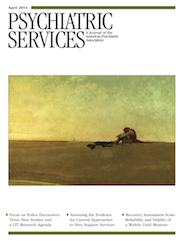Correlates of Competitive Versus Noncompetitive Employment Among Adults With Psychotic Disorders
Abstract
Objective
Studies of the demographic and clinical correlates of employment activity have proven useful for identifying employment assistance needs among people with severe and persistent mental illness. However, the results of prior studies remain unclear, and most reviews of prior studies have not differentiated competitive from noncompetitive employment. This study attempted to clarify the relative strength and consistency of correlates of competitive versus noncompetitive employment.
Methods
Data were drawn from a population-based survey of Australian adults with psychotic disorders between March and December 2010. Demographic, clinical, and employment assistance correlates of competitive and noncompetitive employment were compared. The sample comprised 1,825 participants who agreed to face-to-face interviews.
Results
A total of 408 (22.3%) participants were employed in the previous four weeks, 330 (18.1%) in competitive employment and 78 (4.3%) in noncompetitive employment. Those in competitive employment were more likely to be female and aged 18–34, to have a partner, to have received formal vocational training or education after high school, and to have no literacy difficulties. Better global functioning, shorter illness duration, less severe course of illness, and affective versus nonaffective psychosis were associated with a greater likelihood of competitive employment. Those using Australian government employment services were less likely to be in competitive employment, suggesting a service provider preference for noncompetitive employment.
Conclusions
Four times as many employees were in competitive employment than in noncompetitive employment. The negative relationship between employment assistance and competitive employment highlights the urgent need to improve the effectiveness of Australian employment services for people with severe mental illnesses.



